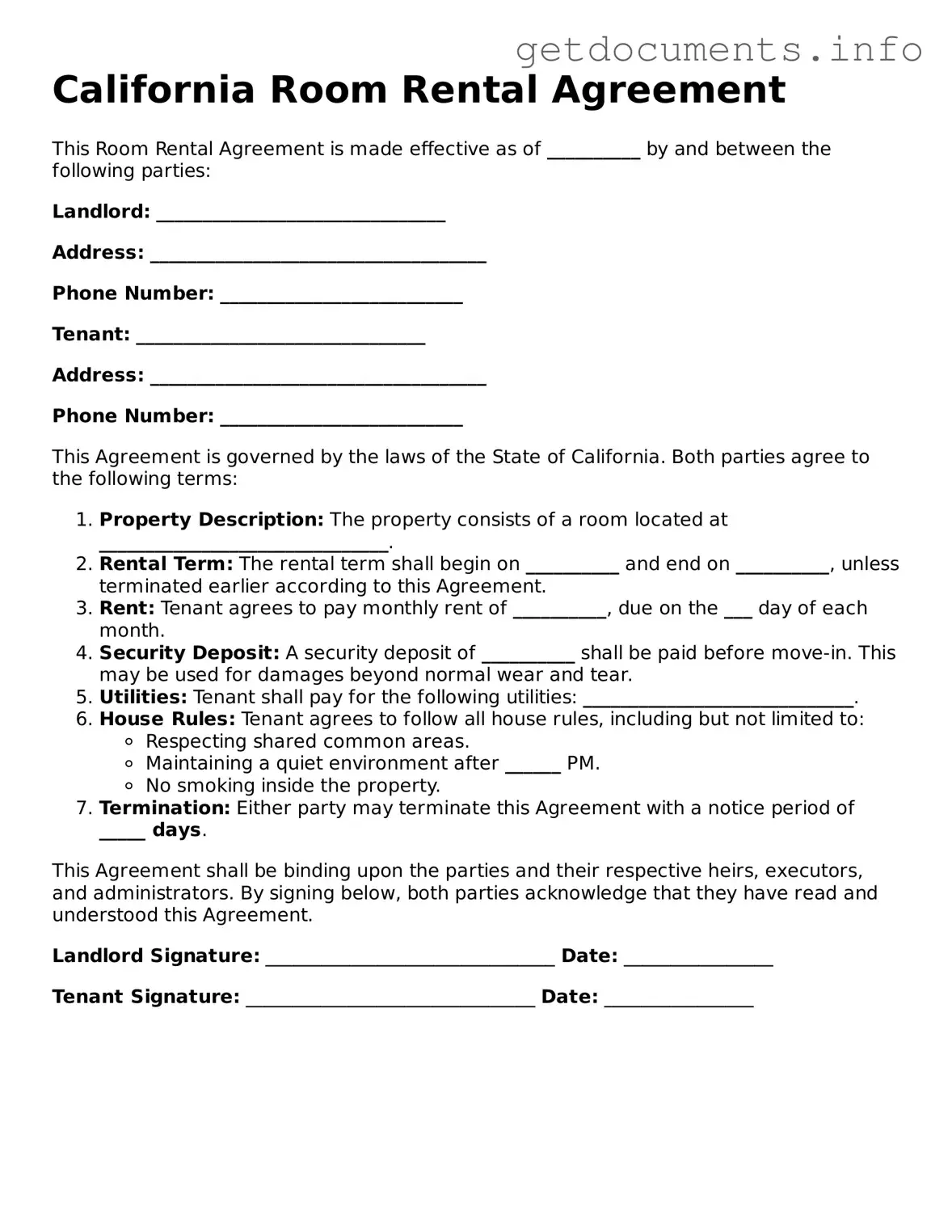Free Room Rental Agreement Template for California
The California Room Rental Agreement form is a legally binding document that outlines the terms and conditions between a landlord and a tenant for renting a room in a residential property. This agreement helps protect the rights of both parties and clarifies expectations regarding rent, security deposits, and other important details. To ensure a smooth rental experience, consider filling out the form by clicking the button below.
Access Room Rental Agreement Editor
